Tenderness with zest
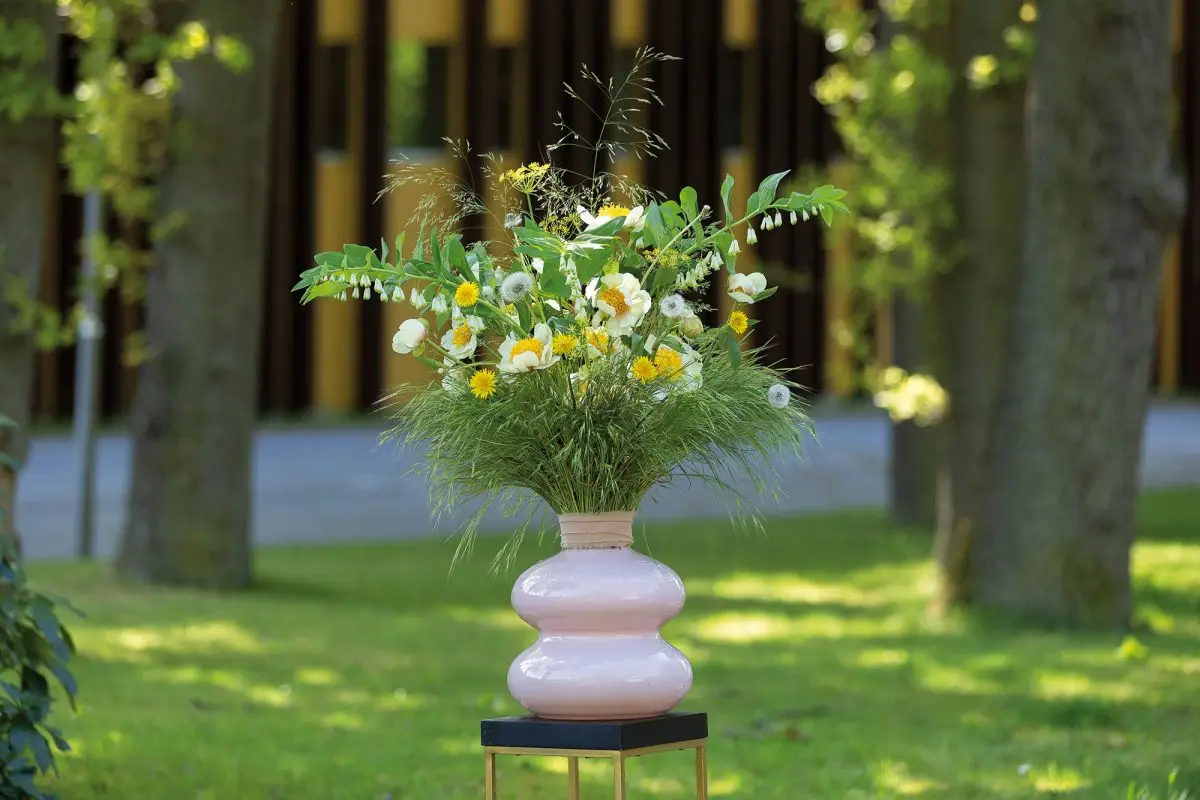
An Oasis sphere rests on a beautiful soft pink vase. For stability, a tonkin stick is inserted into the sphere down into the water-filled vase. A border of grasses is attached around the top edge of the vase with double-sided Oasis tape, which is then finished with ribbon in a matching shade. Solomon's seal (Polygonatum), Paeonia ‘Claire de Lune’ and yellow dill (Anethum graveolens) are then inserted into the Oasis sphere at different heights. Nostalgic dandelions and dandelion seed heads add that extra bit of spice and tenderness to the soft color palette.
Catchy blue
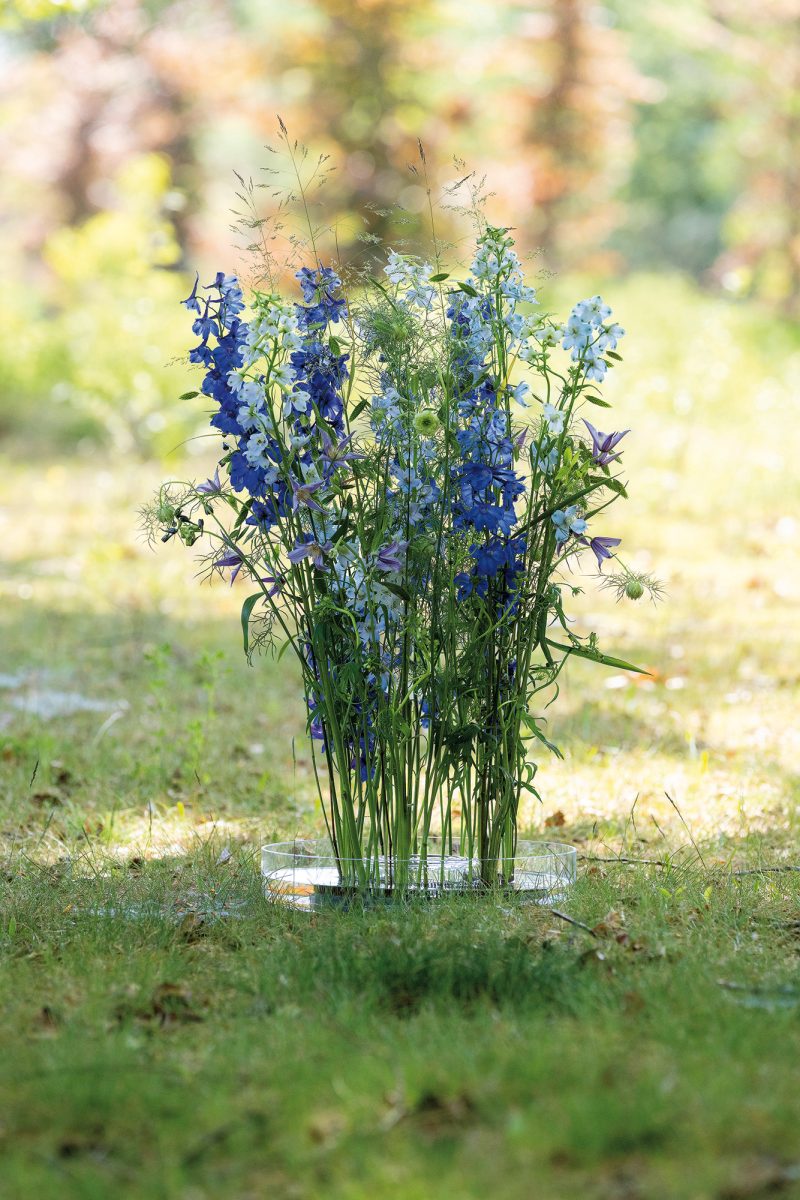
The use of a Kenzan ring is extremely durable. Start with the thinner stems and clamp them, as it were, between the pins. Then work towards increasingly thicker stems. Cut the ends of the stems straight with very sharp (Ikebana) flower shears so that you can get the most force out of the clamping. Materials used: Delphinium and Clematis. Chasmantium latifolium grasses and Sorghum complete the arrangement.
Green as grass
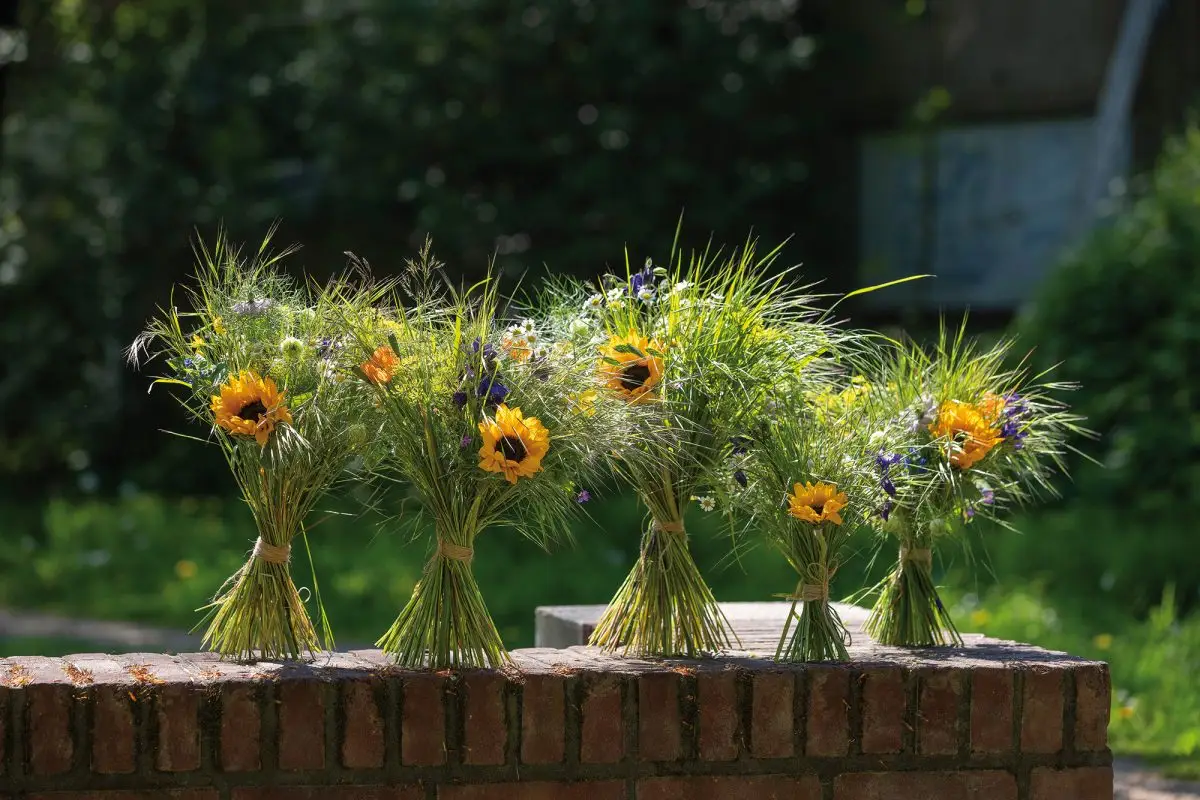
Lovely and oh so summery: various corn stook-bound summer bouquets. It starts with the fresh grasses, with the summer flowers being incorporated at the same height each time. Finally, a border of grass is tied around it. This creates fresh summer bouquets, an atmospheric decoration for a summer garden dinner. Materials used: Panicum, dill (Anethum graveolens), sunflower, aquilegia, and various native plants from the garden or roadside.
Floral ice creams
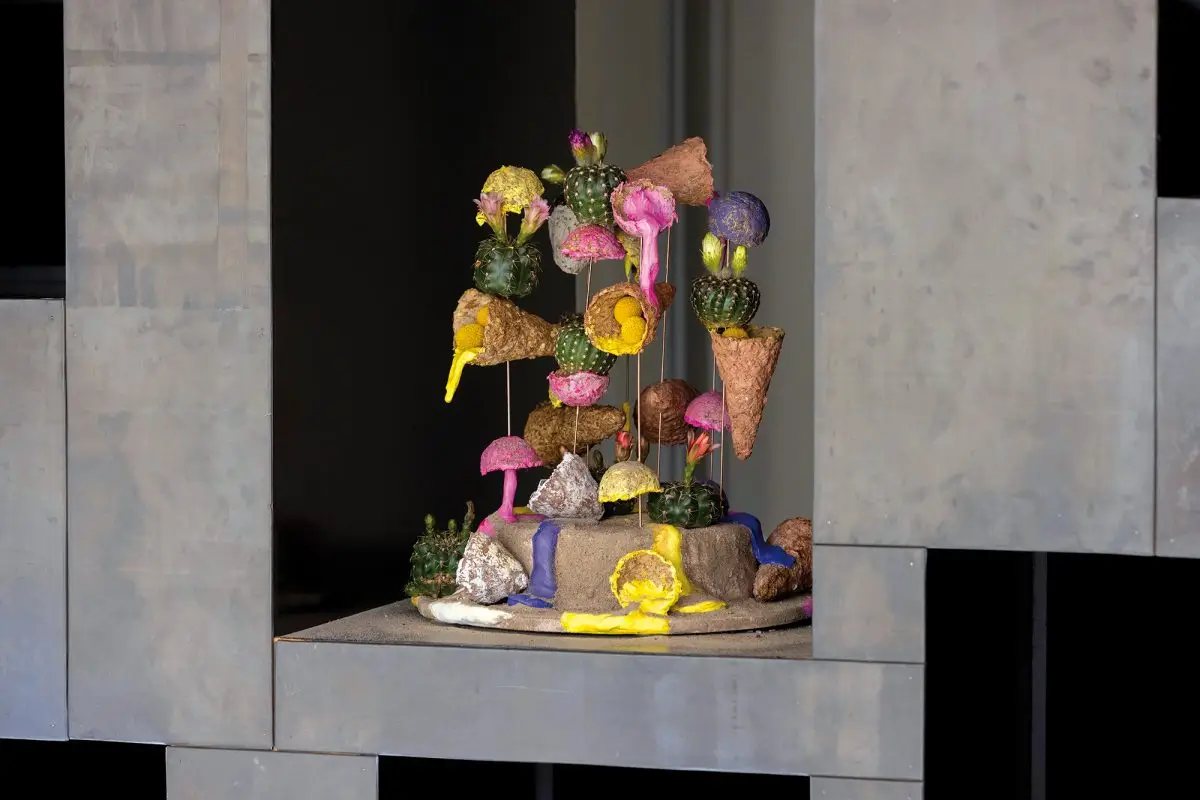
For this summery flower ice cream arrangement, cones and scoops are made of paper pulp with various dried flowers and grasses. The 'ice creams' are attached to the base at different heights with thick copper-colored floral wire, with cacti and Craspedia in between. Colored clay is processed to look like the ice creams are melting. An arrangement full of summer fun to enjoy for a long time.
Sweet and sour summers
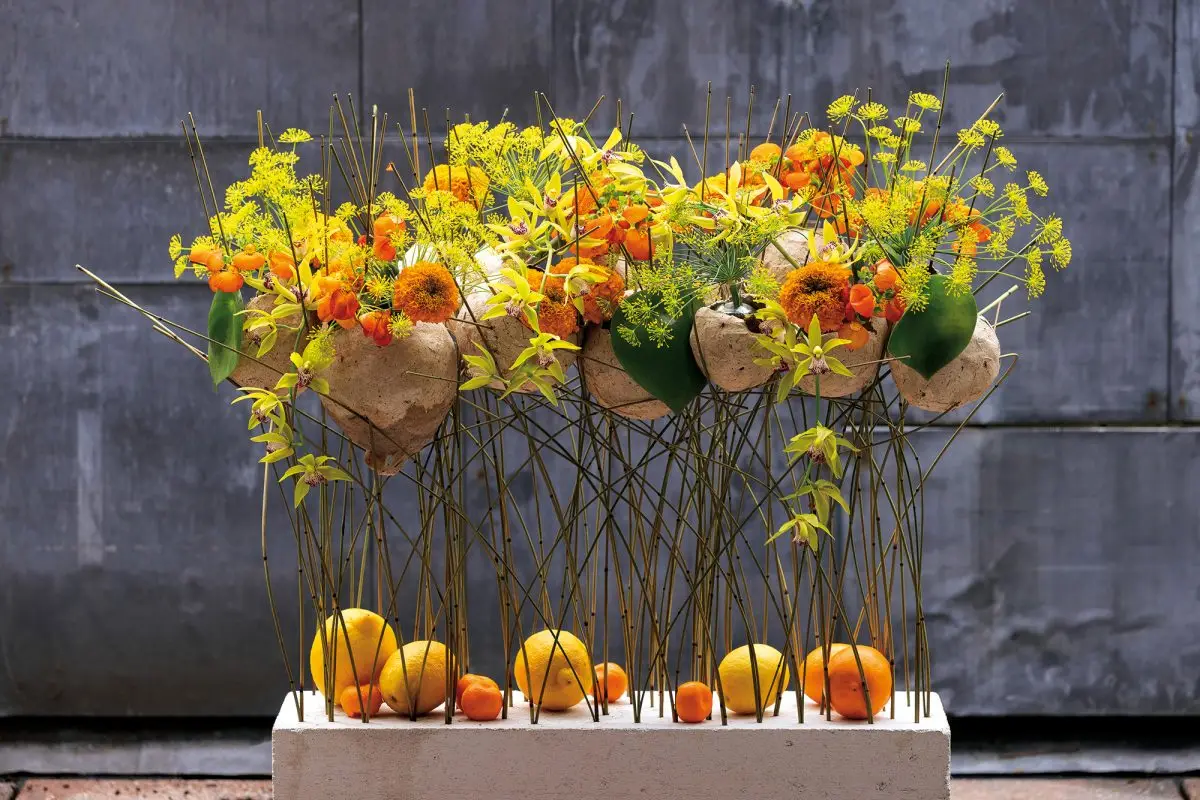
Delicate stems of dried pan reed rise from a sturdy, robust concrete base. The reed stems form a grid of composed verticality. On this rest earthy organic forms of handmade paper from which an explosion of color springs; golden yellow dill, yellow-green Cymbidium, and bright orange Tagetes and slipper flower (Calceolaria). The flowers are placed in glass balls with a layer of handmade paper on top. At the base of this sweet and sour spectacle lie lemons and oranges for even more summer atmosphere.
This is summer, indeed!
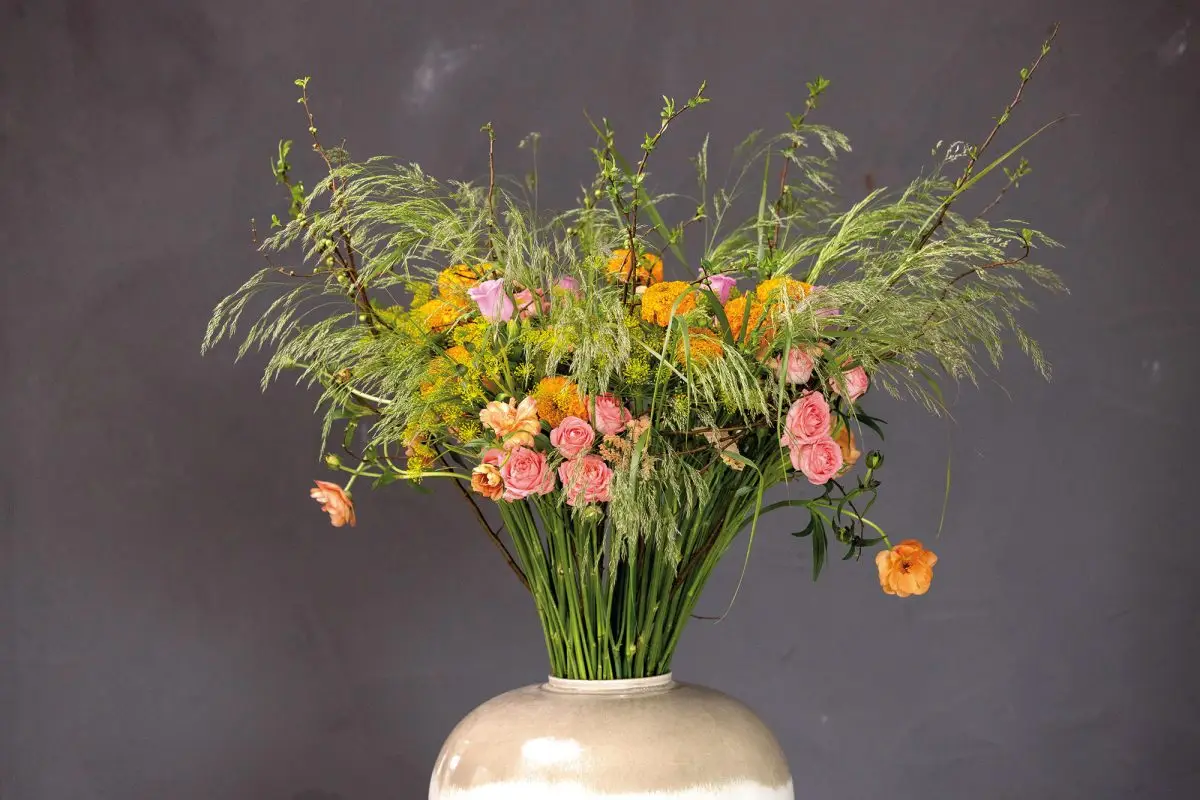
A bouquet with all shades of salmon, orange and pink ‘captured’ in a circle of Panicum grasses. For a round frame, Chaenomeles branches, with beautiful thick flower buds sprouting, are tied together. The flowers are inserted in between: Campanula, Limonium, Tagetes, dill, Ranunculus ‘Butterfly’ and the spray rose ‘Femke’.
